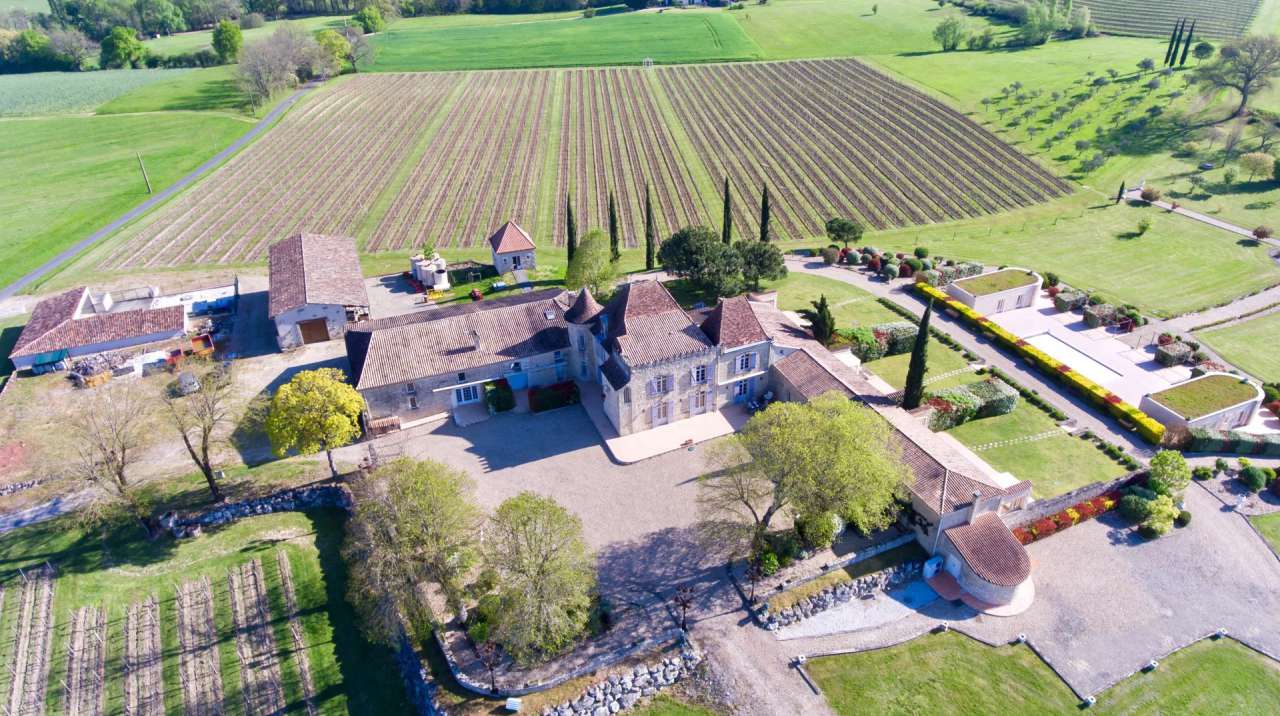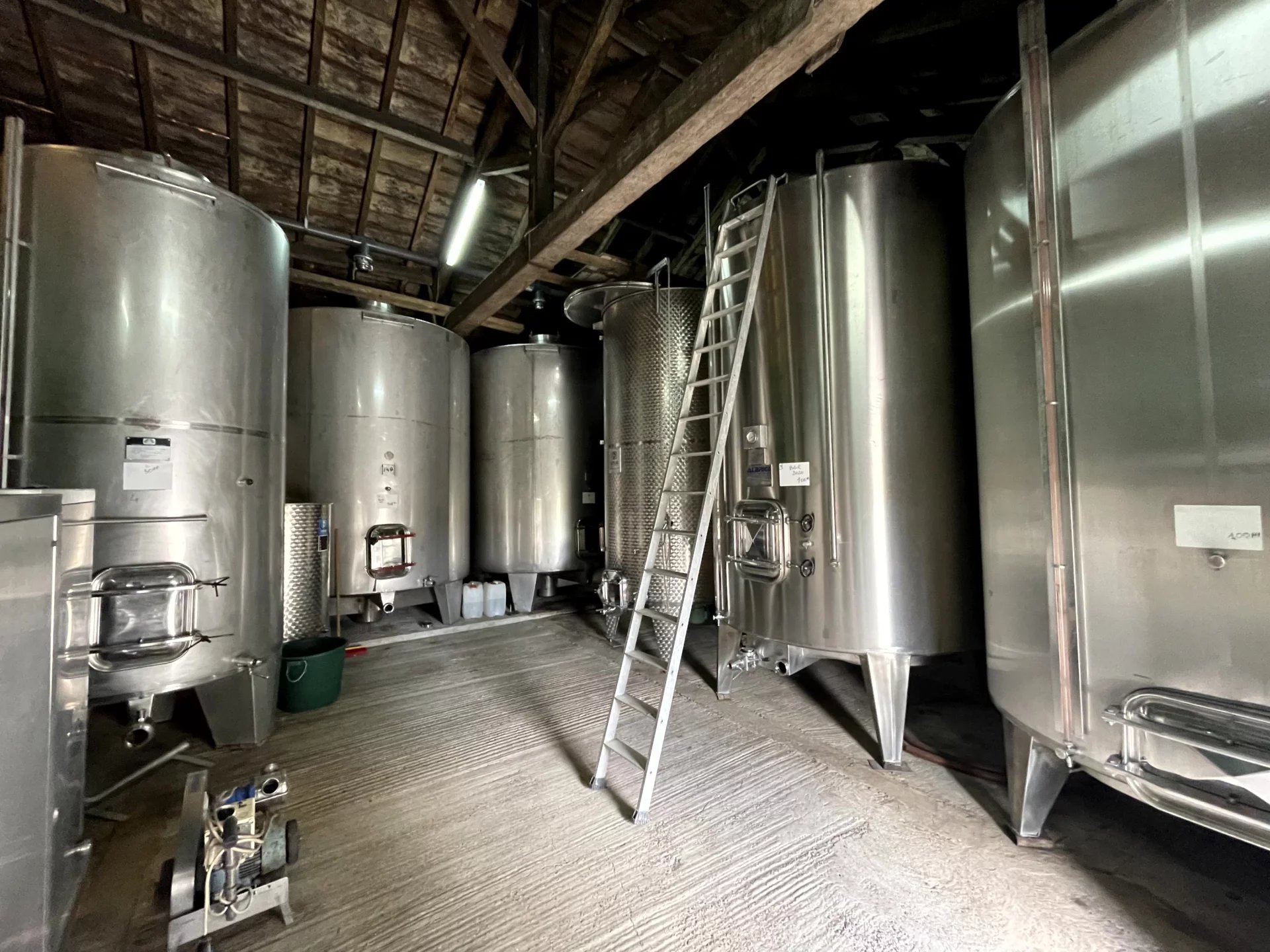Please follow this link to search for Vineyard property for sale from the Prestige Property Group.
Two things we love most in the world are sunshine and wine, particularly when in combination with each other. For many of us, owning a vineyard abroad is the ultimate lifestyle fantasy so from grape to glass, here’s our rough guide of what’s involved in becoming a master winemaker, and the beautiful properties that can turn your fantasy into a reality.
Grapevine Basics
Grapevines are a perennial plant meaning that they grow or bloom during spring and summer and die back during autumn and winter. Meticulous pruning is essential as without human intervention a grapevine can quickly become a bushy mess of leaves and branches. An organised vine is also a happy vine and this helps towards growing a quality grape.
It can take a good two years for a new vine to be ready to produce grapes that can be used for winemaking. These first two years are designed so that the vines can build up vital nutrient stores and develop strong roots. Any flower clusters that grow are usually cut back as producing fruit in such a young vine can be detrimental to its future. Essentially even grapevines need to walk before they can run.
Usually by year three, a vine is able to produce fruit of proper quality and will continue to do so up to 30 years. Once 30 hits, much like myself, production slows down dramatically and the label “old vines” may be applied by some wineries.
Click image for property details:

Growing The Perfect Vineyard
When it comes to growing, pruning and training your vines, all established wine growing regions tend to adopt a specific method based on the local climate and terroir, as well of course as the specific grape variety.
High vines with tall trunks lift the grapes higher above ground, increasing sun exposure and airflow and in turn, this reduces the chance of fungal infections. This method is mainly used in cooler climates where there are higher levels of moisture.
On the other hand, low vines with a short trunk are designed to reduce the grapes’ exposure to the sun, something which is important in the hotter growing regions.
As well as height, the spacing of the vines is also important. In very dry regions vines are spaced further apart to increase their ability to access nutrients from the soil. In moist or well irrigated areas spacing the vines apart will increase production levels, however be warned, it will also simultaneously reduce the quality.
Click image for property details:

The Lifecycle of a Grapevine
Winter is all about the pruning and besides the actual harvesting, this will be one of the most expensive, important and time-consuming activities in your vineyard. Get this wrong and you will struggle to harvest anything. Whilst we’re not talking Edward Scissorhands levels of topiary, you do need to be aware of what’s involved with different pruning techniques and the implications of each on your vines.
There are two distinct methods, cane pruning or spur pruning and the system used in each vineyard is predetermined during vineyard design process. That being said, where over or under production becomes an issue, you can change the way vines are trained from season to season but as with most things, if it’s not broken, don’t fix it.
With the arrival of Spring, April and May offer the first signs of new life on your vines as the buds begin to break through. The buds are extremely delicate at this stage and the dreaded April showers can have serious consequences in their extreme forms. In Beaujolais, France during the 2016 vintage, seasonal hail storms sadly wiped out 100% of buds from some vineyards.
As the buds break through, some viticulturists choose to prune the downward facing shoots so that only upward facing shoots remain and the crop size is reduced. This is because reducing the quantity increases the quality as the subsequent grapes that are allowed to grow are a lot more concentrated.
As summer hits, June and July see young clusters beginning to appear and it is these clusters that will eventually become grape bunches. As they ripen over the course of the summer, they will change in colour from green and yellow to glorious pinks, reds and purples, with sugar levels rising as they mature. This really is the most wonderful time of year in a vineyard as the fruits of your hard labour are literally right there for you to see and appreciate in all their glory.
The Autumn Harvest. Harvest usually occurs sometime between September and November once the grapes have hit the proverbial “sweet spot.” This is the crucial moment when the perfect degree of ripeness has been reached and viticulturists and harvesters set to work around the clock, picking the grapes before it’s too late. Once picked, it’s time for the magic to happen.
Click image for property details:

From Grape to Glass
The exact harvesting process will vary in terms of time, technique and technology depending on the grape, region and the kind of wine you are producing. That being said however, for the most part, every wine harvest will include these basic vine-to-wine steps:
• Pick the grapes
• Crush the grapes
• Ferment the grapes into wine
• Age the wine
• Bottle the wine
The Pick
Grapes are either cut from the vine by human hands with shears, or by machinery. Many prefer the traditional human method so as to avoid the possibility of the machinery causing any damage to either the vines or the ground.
Once picked and collected the grapes are then taken to be sorted, destemmed and lightly crushed and before you ask, no, you don’t need to take your socks off, it’s all done by machine these days.
The Crush
For white wine, the grapes are transferred into a press so that the juice can be extracted and the skin left behind. The pure juice is then transferred into tanks where sediment settles to the bottom of the tank and after a specific settling period, the juice is then filtered into another tank, sediment free, ready for the fermentation process.
For red wine, the same grapes are used however you skip the pressing stage and instead the grapes together with the skin go straight into a vat to start fermenting. This is how red wine gets it colour.
The Fermenting
Simply put, fermentation is when sugar converts into alcohol. When on the vine, the grapes are covered with yeast, mould and bacteria, all of which is released during the light crushing stage. By putting the grape juice into the vat at the right temperature, this yeast will convert the sugar in the juice into alcohol and carbon dioxide.
In the case of red wine, when that carbon dioxide is released, the grape skins will rise to the surface so winemakers need to either “pump over” or “punch down” the liquid several times a day to keep the skins in contact with the juice.
The Ageing
When it comes to ageing the perfect bottle, winemakers have several options available which all depend on how you want your end product to taste. You can age for years or months, in oak barrels or stainless steel, American oak or French oak, toasted or neutral…… The choices are plentiful!
The Bottling
Once you’re satisfied that your wine has aged sufficiently, it’s ready for bottling. White wines can be ready after a few months whereas reds take longer and typically need 18-24 months of ageing before bottling.
Once bottled there’s only one thing for it of course, pop that cork, sit back, and enjoy. Cheers my friends!
Click image for property details:

Whilst of course there is some romanticism to winemaking (particularly after sampling!) there is undoubtedly a lot of work involved in every cycle and there is both an art and a science behind the success of every great bottle. From soil PH levels and climate conditions, to devastating diseases and back-breaking work, be under no illusion that you must be prepared to invest a lot of energy into cultivating a productive vineyard. That being said however, with hard work comes great success and owning your own vineyard really can offer you the perfect lifestyle abroad.
Further Information.
For more information on any of the properties featured in this article, please follow the appropriate link or click on the relevant image(s) to complete an enquiry form. Alternatively, please follow this link to search for more Vineyard property for sale from the Prestige Property Group.
For any other enquiries, please contact us here.
